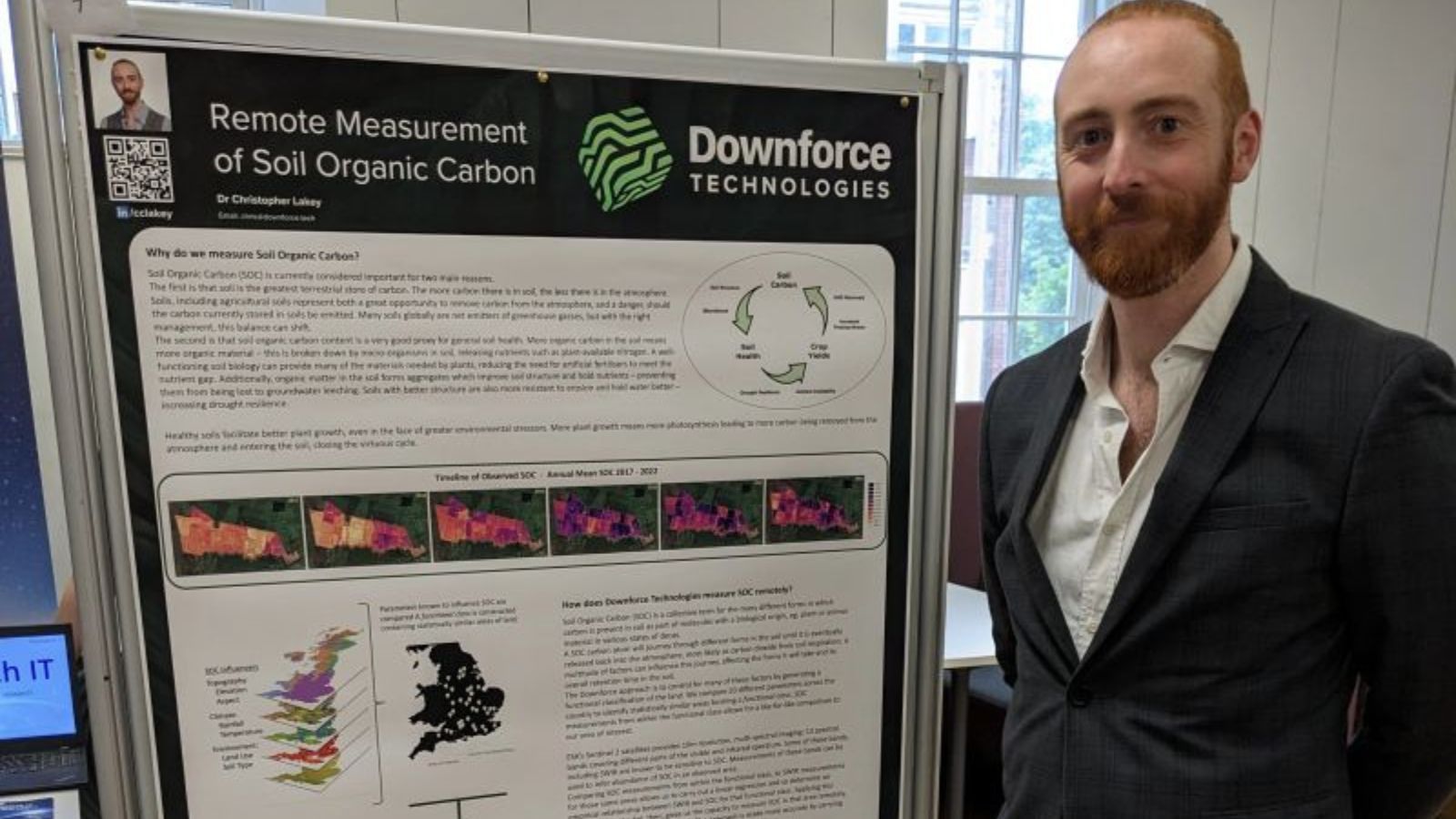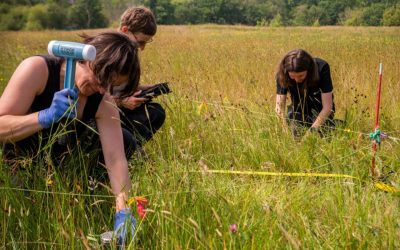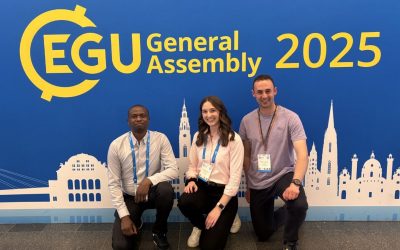Written by BSSS member, Christopher Lakey
This year was a busy but satisfying one as I was fortunate to have a number of opportunities to talk about the work I and my colleagues at Downforce Technologies have been doing. At the end of May, I was invited to attend the SCI Agriscience committee meeting. There, in addition to learning about the great behind the scenes work that the committee do, I was invited to present a talk to the committee expanding upon a poster which had won the poster prize at an SCI event earlier in the year. The talk (titled Downforce Technologies’ Empirical Measurement of SOC) dealt with the way Downforce carries out remote measurement of Soil Organic Carbon, and how our work to better understand the effectiveness and accuracy of soil sampling supports this. The committee members asked some great questions around the scalability and accuracy of the measurement, and how we were able to apply the methodology both in the British Isles, but also to measure soil carbon in areas as diverse as Australia, Kenya, and the USA.
Downforce’s remote approach relies on many of the same principles as lab-based spectroscopy, a link I was happy to explore at an Early Career Researcher Event hosted by the Chemistry Department of Manchester University. There I presented a poster describing our approach of using multispectral data in combination with historical soil sampling and covariate data to develop empirical models, unique for each area of study, that relate remote measures to carbon stocks. The parallels to lab-based reflectance spectroscopy provoked some good discussion, but almost more valuable was having the opportunity to demonstrate to talented PhD students and post-docs that a career in Industry (in a small start-up, in my case) can provide a great alternative to academia for a job doing interesting research on important problems.
Finally, I was pleased to give the final research seminar of the academic year to the Mathematical Biology research group at the University of York. There, I again spoke about the challenges of remote measurement and modelling to quantify elements of natural capital, including soil health. The questions from this academic audience drilled into the fundamentals of the different methodologies used, providing some excellent insights and points of reflection. Three different audiences, but each presentation offered new points of discussion and valuable feedback, highlighting the value of sharing one’s work with diverse perspectives in varied settings.




